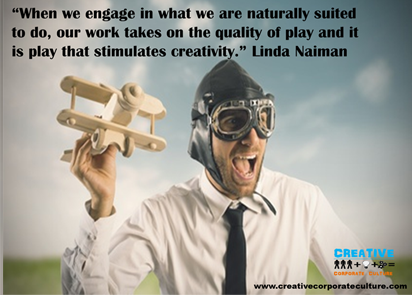Blog
10 Tips to Use Lean Startup as a Systematic Approach to Manage Creative Thinking by Lorenzo del Marmol
Post├® le 15/05/2015
The birth of Lean Startup as a systematic approach to create, develop, and manage businesses and products has emerged as a significant force in new product development. As a ŌĆ£newŌĆØ and epic approach to innovation (Lean Startup is new not the approach), lean methods covers everything that is needed to handle the ins and outs of your creative thinking process. It helps me to collect inspiring insight to do some iteration on my models, and when to push it through.
By using Lean Startup as a creative thinking process, the possibility of failure is diminished in the early stage of any startup project and the capacity to generate new ideas is increased. What I like the most in this method is that it accept failure and it employs experimentation (prototyping) for premium user feedback. In other words, you learn by doing and collect data to create products or services that matter to people.
My Working Philosophy and the Wonderful Bla Bla Bla
I think that the Lean Startup philosophy IŌĆÖm trying to share with you is only the tip of the iceberg. There are so many other methods and things I would like to speak about. In my experience as Coach and micro-entrepreneur, building a start-up is a lot about managing your creativity, your passion and the way you listen to your clients or the world.
If you as an entrepreneur or intrapreneur are tasked with creating a new product or developing your start-up idea, here is some insight and thinking related to my working philosophy:
1 - Be passionate
I think you can only be passionate about something if you own the idea all the time and make it a part of yourself.

2 - Instead of discipline, think devotion.
Luciano Pavarotti, oneŌĆÖs said: ŌĆ£People think IŌĆÖm disciplined. ItŌĆÖs not discipline, its devotion, and thereŌĆÖs a great difference.ŌĆØ
3 - Assemble the best team you can.
Entrepreneurs can work alone but they have to collaborate, think and network with other entrepreneurs. In order to think like an entrepreneur you need to evolve in their world. Sometimes, they give the illusion that they are working alone but they actually have a team of passionate people and a powerful network, like the MIC, at their disposal.
4 - Intrapreneurs should create their own ŌĆ£Start-up TeamŌĆØ.
For large companies, innovation breakthroughs are harder to come by and foster. Why? I think that the many layers of bureaucracy, approval and management bog the whole process down. I believe the way to circumvent this problem is to set up special pluridisciplinary ŌĆśStart-ups TeamsŌĆÖ that arenŌĆÖt beholden to usual company rules. They need financial autonomy, freedom and the power of decision. To trigger this, you can create and organize a team building start-up weekend or join MIC programs.
5 - You need inspirational rituals.
You need inspirational rituals. One of the best ways to inspire yourself and create every day is to develop rituals that you begin to use regularly and routinely. This will condition your brain for better creativity. For instance, your ritual might be reading in the morning, listening music, meditating for a few minutes or taking several deep breaths.
6 - DonŌĆÖt shy away from failure.
Risk nothing, gain nothing. Do you agree? I do, but I donŌĆÖt agree when people say that entrepreneurs take unmeasured risks in order to get the results they want. I believe that entrepreneurs measure the risks they take but are probably more open to failure.

7 - Try to create something every day.
Create something every day, even if itŌĆÖs only for 5 or 10 minutes. I write articles, I draw mind maps, develop business models and I also collect and connect hundreds of ideas. I always have 3 projects in the pipeline, lots of them fail or are not developed but they are a great source of insight for me. Here is a short list of my projects (This is also a good way to present what I do ;-)):
- In July 2010, I was in the Himalayas to produce and direct a long featured documentary http://www.introspectus.eu/.
- In December 2010, I was working on a collaborative filmmaking platform, an innovation benchmarking software and a Fab Lab project.
- In 2013, I launched my first blog to speak about creative thinking: http://www.creativecorporateculture.com/.
- In May 2013, I was breeding insects to develop food protein solutions. I stopped because it was not profitable.
- In July 2013, I created the Business Model Academy (http://www.business-model.be/) to support and coach start-ups in their value proposition and business model design.
- In February 2014, with 4 other partners, I launched Lean Six Sigma Belgium (http://www.leansixsigmabelgium.com/). We use Lean Management principles in order to identify waste and design faster and responsive processes. We also use Six Sigma principles to improve customer satisfaction by delivering perfect products and services on a consistent basis.
- In July 2014, I co-founded a training and team building project related to agility, collective intelligence, creativity and happiness at work : Agile & Scrum Belgium & Team Building Spirit
- In May 2015, I launched Lean Six Sigma France (leansixsigma.fr) and a content marketing ghostwriting agency called Ghost Writer Hub (http://ghostwriterhub.com/).
All those projects are inspiring each other and generating new ones. ItŌĆÖs a wonderful feeling. Some people call this luck or planned serendipity.

8 - Foster creative collisions.
The more interactions exist among your employees or in your network, the more opportunities you will have for productive and creative encounters. You can organize networking events, professional associations, think thanks, sport clubs, charities and other community groups.
9 - Use Growth Hacking Techniques and Social Networks.
I find it funny how Google, SEO, inbound marketing, blogging, likes, shares and retweets have shaped out my world. Now, validation and popularity are determined by clicks and views. Try to hack and automate the world around you. Use Google, Facebook, Twitter, LinkedIn and other popular tools to let people know about your brand.
10 - User experience is a big part of your branding.
User experience is the best way for your brandŌĆÖs message to stick. People remember the experience more if you are able to convey the message of your brand past the superficial. Aside from how your product or brand looks, you can also concentrate on how to make people seeing, hearing and feeling your brand an unforgettable experience. I hope this article contributed to your experience?

At the end, if you want to be a Lean Startup and creative thinker, you have to be ready for the long haul and you have to pack a lot of passion. I personally seek to make an impact on peopleŌĆÖs beliefs, culture and minds. Creative thinking isnŌĆÖt for the faint of heart but the right people can amass the right knowledge in the right quantities to address a goal or problem. As Edward de Bono says ŌĆ£Creative thinking is not a talent, it is a skill that can be learnt. It empowers people by adding strength to their natural abilities which improves teamwork, productivity and where appropriate profits.ŌĆØ
Author Lorenzo DEL MARMOL

Twitter: @DM_Lorenzo / @ghostwriterhub
LinkedIn: https://www.linkedin.com/in/lorenzodelmarmol
Pinterest https://www.pinterest.com/delmarmollorenz/
Ajoutez cet article ├Ā vos favoris.
Copyright © Microsoft® Innovation Center Belgium